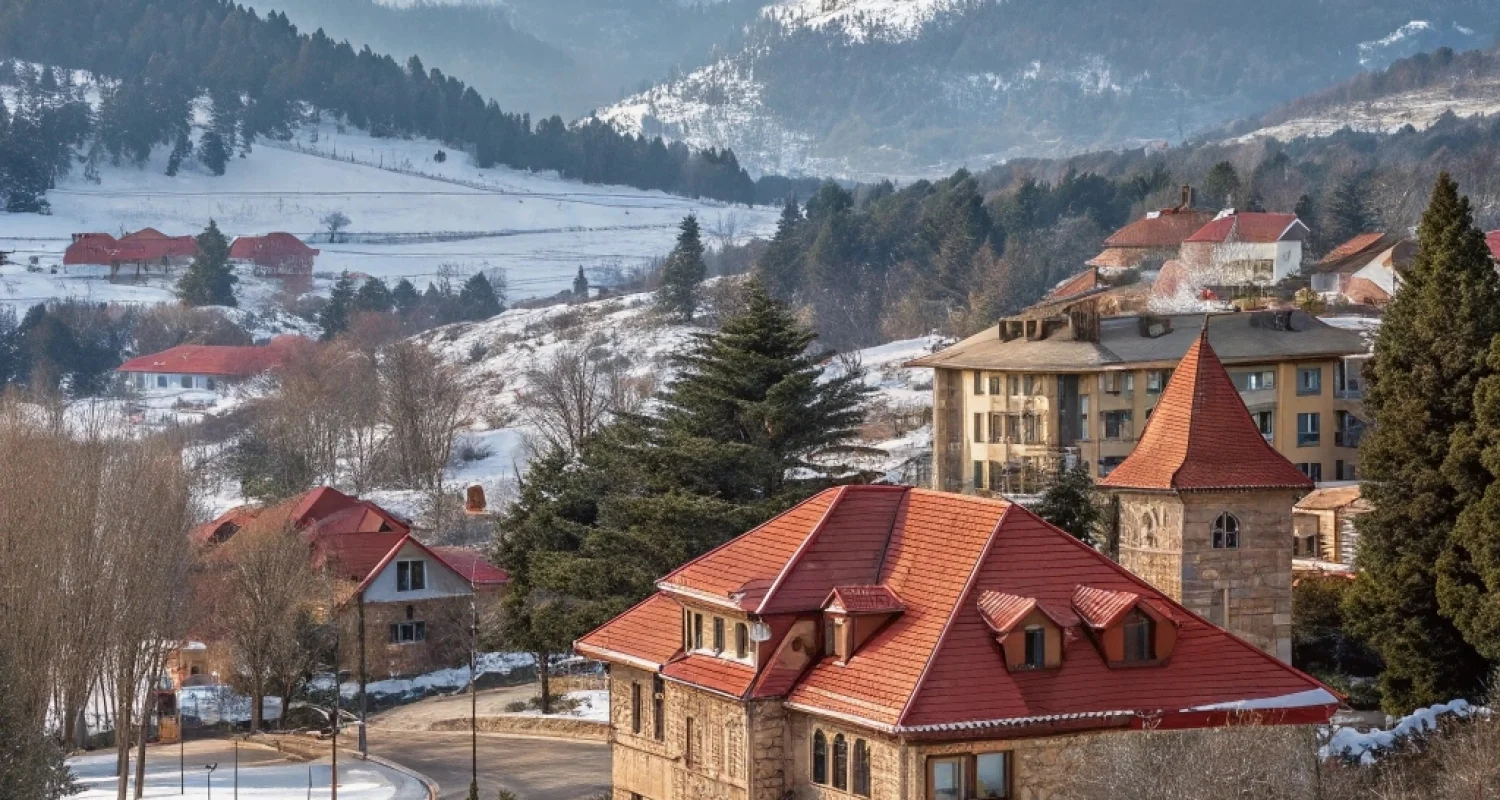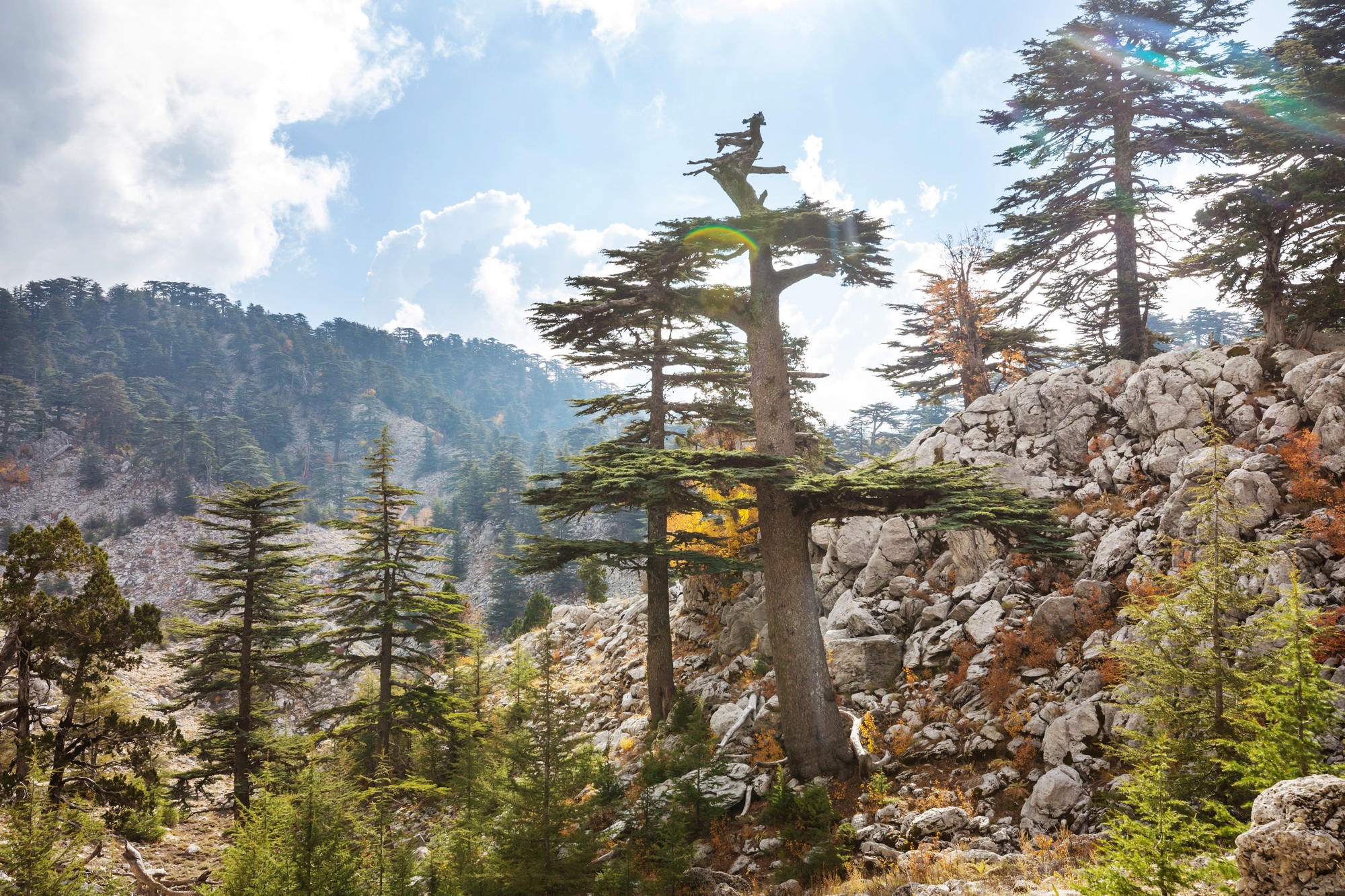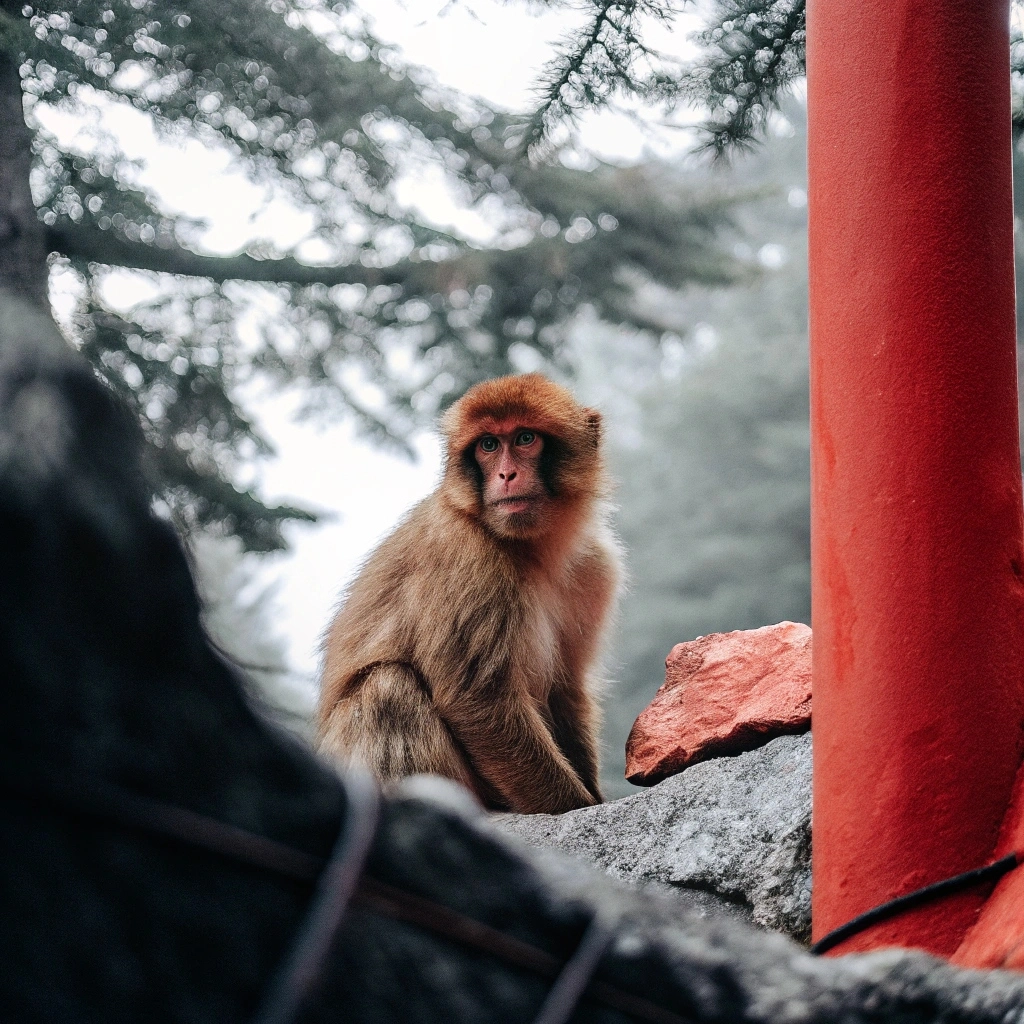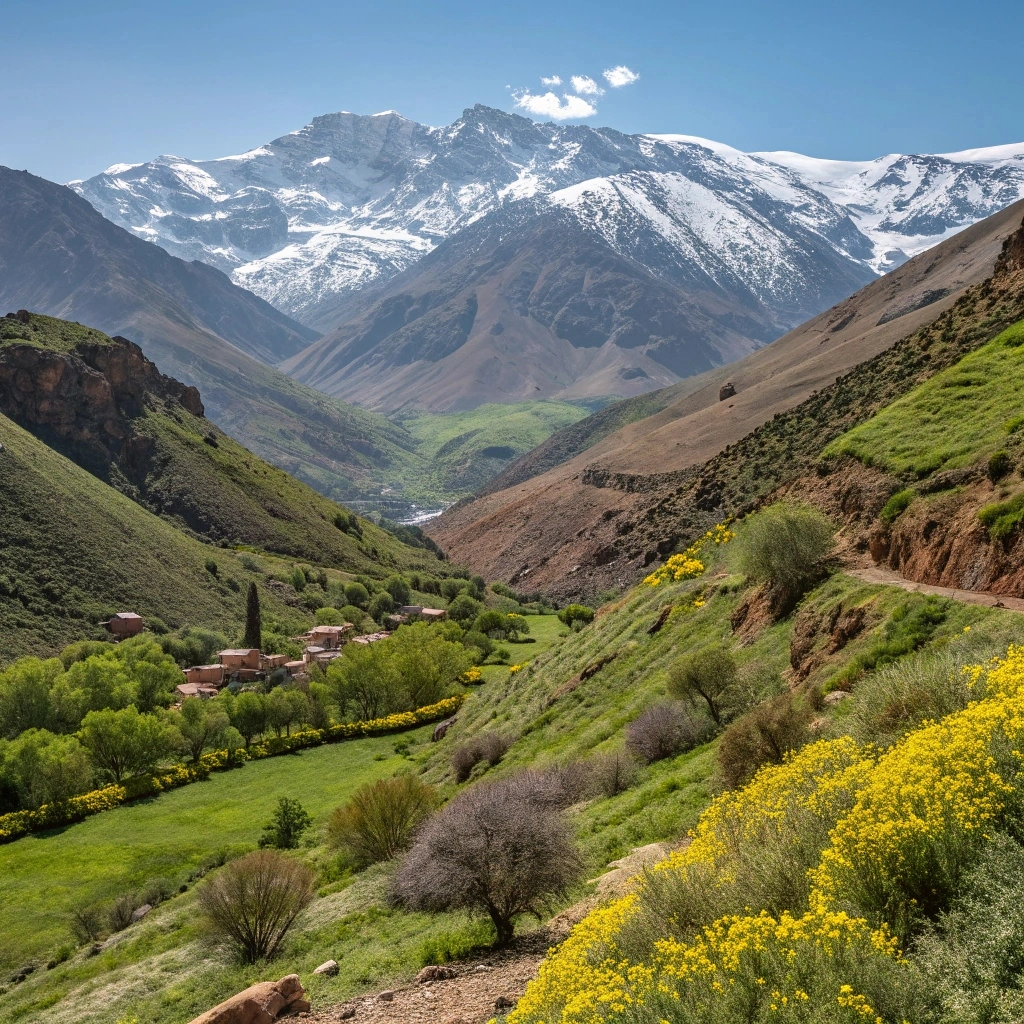Home / Single Post
Recent Blog
Ready to explore with us

- June 23, 2025
- Adventures
Did you know that nestled within Morocco’s rugged landscapes lies a region that defies every preconception about North African nature? Ifrane Province, often called “Little Switzerland of Africa,” challenges the common belief that Morocco is solely a land of deserts and Mediterranean coastlines. This extraordinary province in the Middle Atlas Mountains harbors ecosystems so unique that they seem transported from Alpine Europe, yet they remain distinctly Moroccan. Located at altitudes exceeding 1,700 meters, Ifrane Province presents a fascinating paradox: a mountain oasis where cedar forests meet African wildlife, where snow falls regularly, and where endangered primates thrive in conditions found nowhere else on the continent.
What makes this region’s natural heritage so exceptional that it warrants protection as a national park and recognition as a UNESCO Biosphere Reserve? The answer lies in a remarkable convergence of geographical, climatic, and ecological factors that have created one of Africa’s most biodiverse and climatically unique environments.
Reason #1: Ancient Cedar Forests Unique to the World

The ancient cedar forests of Ifrane Province represent one of nature’s most extraordinary phenomena. These are not ordinary trees—they are living monuments to time itself, with some specimens reaching ages of over 800 years. The Cedrus atlantica (Atlas Cedar) creates cathedral-like forests that stretch across the mountainous terrain, forming the backbone of the region’s ecological identity.
What makes these forests truly unique is their scale and preservation. These forests support a wide variety of wildlife, including the endangered Barbary macaque, North African boar, and a plethora of bird species. The cedar forests of Ifrane Province contain some of the most pristine and extensive stands of Atlas Cedar remaining in the world, covering thousands of hectares at elevations between 1,600 and 2,400 meters.
These ancient giants serve as natural air purifiers, producing oxygen at rates that significantly exceed most other forest types. Their resinous wood naturally resists decay and insects, allowing these trees to stand for centuries as silent witnesses to Morocco’s changing landscapes. The forest floor beneath these towering cedars creates a unique microclimate—cool, humid, and rich with organic matter—that supports an incredible diversity of understory plants, fungi, and smaller wildlife.
The ecological importance extends beyond their impressive longevity. These cedar forests act as crucial carbon sinks, storing vast amounts of carbon dioxide and helping to mitigate climate change impacts. For visitors, walking through these ancient groves feels like stepping into a natural cathedral, where the interplay of light filtering through the canopy creates an almost mystical atmosphere that photographers and nature lovers find irresistible.
Reason #2: Sanctuary of Barbary Macaques, Africa’s Unique Primates

Perhaps no single species better exemplifies the uniqueness of Ifrane Province than the Barbary macaque (Macaca sylvanus). Ifrane National Park in Morocco is home to the Atlas Mountains and 25% of the world’s population of the Barbary Macaques. This staggering statistic reveals the global importance of this region for primate conservation.
The Barbary macaque holds the distinction of being Africa’s only native monkey species, and more remarkably, it’s the only primate species other than humans that naturally occurs in both Africa and Europe (with a small population in Gibraltar). It is one of the few remaining habitats for the Barbary macaque; a primate which prehistorically had a much broader range in North Africa, but currently survives as an endangered species in narrowly restricted and fragmented habitats.
These intelligent primates have adapted specifically to the cedar forest environment of Ifrane Province. They play a crucial ecological role as seed dispersers, particularly for cedar and oak trees. The macaques disperse the seeds of cedar and oak trees in a way that enables their vigorous growth without human intervention. This makes them essential partners in forest regeneration and ecosystem health.
What makes observing these macaques particularly special is their behavior in the wild. Unlike many primate species that remain hidden from human view, Barbary macaques in Ifrane Province can often be observed going about their daily activities—foraging, socializing, and caring for their young. They live in complex social groups with intricate hierarchies and demonstrate remarkable intelligence in their problem-solving abilities.
The presence of these endemic primates in such numbers makes Ifrane Province one of the world’s most important primate conservation areas. For wildlife enthusiasts and researchers, this region offers unparalleled opportunities to observe and study these fascinating creatures in their natural habitat.
Reason #3: An Extraordinary Alpine Microclimate in North Africa

The climatic conditions of Ifrane Province create what can only be described as a meteorological miracle. Discover Ifrane the pearl of the Middle Atlas.elle is known for its variety, its Nature and above all for its unique climate. This unique climate represents a stunning deviation from typical North African weather patterns.
At elevations exceeding 1,700 meters, Ifrane Province experiences a continental mountain climate that includes regular snowfall, crisp alpine air, and four distinct seasons—a rarity in Morocco. Winter temperatures regularly drop below freezing, creating snow-covered landscapes that transform the region into a winter wonderland. At the Michlifen resort, skiing and sledging are leisure activities not to be missed!
This alpine climate creates growing conditions that support plant and animal species typically found in European mountain ranges. The temperature variations between day and night, combined with adequate precipitation, create ideal conditions for the cedar forests and support biodiversity that would be impossible in Morocco’s more typical arid or semi-arid environments.
The unique climate also influences local water resources. The province benefits from natural springs, seasonal snowmelt, and higher precipitation levels that create a network of streams, seasonal lakes, and wetland areas. These water sources support both the local ecosystem and provide crucial resources for surrounding regions during dry periods.
For visitors, this climate means experiencing weather conditions unlike anywhere else in Morocco. Summer temperatures remain pleasantly cool, making it an ideal escape from the heat of lower-elevation regions. The crisp, clean mountain air provides a refreshing contrast to the dusty atmosphere of Morocco’s cities and desert regions.
Reason #4: Exceptional Biodiversity with Over 1000 Species
The biodiversity of Ifrane Province represents one of Morocco’s greatest natural treasures. The park is home to a flora of more than 1000 species including around 250 endemic species. Holm oaks, poplars, fruit trees and flowers of all kinds complete the colorful landscape of the hiking trails. This incredible diversity stems from the unique intersection of Mediterranean, Atlantic, and continental climate influences.
The flora creates a tapestry of colors and textures that changes dramatically with the seasons. Spring brings wildflower blooms that carpet the forest floors and meadows with vibrant colors. Other tree species that exist in the park include the Montpellier maple, the yew, and the holly. These species, combined with the dominant cedars, create complex forest ecosystems with multiple canopy layers.
The fauna diversity is equally impressive. Moreover, in the park one can find Barbary wild boars, African wolves, striped hyenas, Barbary alongside the famous macaques. The region serves as a critical habitat for numerous bird species, including both resident and migratory populations.
The multiple sources and bodies of water form a privileged habitat for a wide diversity of migratory birds such as storks, herons and ducks. This makes Ifrane Province a crucial stopover point for birds migrating between Europe and Africa, adding an international dimension to its ecological importance.
The endemic species are particularly significant from a conservation perspective. These plants and animals exist nowhere else on Earth, making their protection a global priority. Many of these endemic species have evolved specific adaptations to the unique environmental conditions of the Middle Atlas Mountains, representing millions of years of evolutionary refinement.
For nature enthusiasts, this biodiversity offers endless opportunities for discovery. Whether you’re interested in botanical photography, birdwatching, or simply experiencing the complex web of life that thrives in this mountain ecosystem, Ifrane Province provides experiences unavailable anywhere else in Morocco or North Africa.
Reason #5: Contrasting and Spectacular Landscapes
The landscape diversity of Ifrane Province creates visual experiences that seem to encompass multiple continents within a single region. Ifrane is often referred to as Morocco’s “Garden of Eden” because of its contrasting scenes of marshy wetlands, cherry orchards and Alpine forests. Visitors often marvel at the sheer diverse ecology of this protected park, and its typically “un-Morrocan” landscapes.
The topographical diversity is remarkable, ranging from gentle rolling hills to dramatic mountain peaks. The Model Forest territory is that of the Province of Ifrane, which is distinguished by a mountainous landscape, with an altitude gradient ranging from the low hills in the Northwest to the high summits in the Southeast with the highest point in Jbel Hyan at 2,409 m. This elevation gradient creates distinct ecological zones, each with its own character and wildlife.
The visual contrasts are striking at every turn. Dense cedar forests give way to open meadows dotted with wildflowers. Rocky outcrops and cliff faces provide dramatic backdrops to serene lakes and flowing streams. In winter, snow-covered peaks create Alpine vistas that seem transported from the European mountains, while in spring and summer, the landscape transforms into a green paradise.
Although Ifrane is well worth a visit because of how unusual it is among Moroccan cities, its most charming feature is probably the Ifrane Nature Park: mountains, forests, springs, lakes… it’s undoubtedly the ideal place for lovers of nature and fresh air. The combination of natural features creates countless opportunities for outdoor recreation and photography.
The seasonal changes add another dimension to the landscape’s appeal. Autumn brings brilliant foliage colors as deciduous trees change before winter’s arrival. Winter snow transforms the entire region into a monochromatic wonderland. Spring explosion of wildflowers and new growth creates a sense of renewal and vitality. Summer provides the perfect climate for hiking and exploring the diverse terrain.
These contrasting landscapes within a relatively compact area make Ifrane Province a photographer’s dream and a naturalist’s paradise. The ability to experience such diverse natural environments within a single day’s exploration is virtually unmatched anywhere else in Morocco.
Best Times to Visit
The optimal timing for experiencing Ifrane Province’s natural wonders depends on your interests and preferred activities. Spring (March-May) offers the most spectacular wildflower displays and comfortable temperatures for hiking. Summer (June-August) provides ideal conditions for extended outdoor activities with cool temperatures and minimal precipitation.
Autumn (September-November) showcases brilliant foliage colors and offers excellent photography opportunities as the forests prepare for winter. Winter (December-February) appeals to those seeking snow experiences and winter sports, though some high-altitude areas may be inaccessible.
Practical Tips for Exploration
Planning a visit to Ifrane Province requires some preparation to fully appreciate its natural wonders. Bring layered clothing regardless of season, as mountain weather can change rapidly. Sturdy hiking boots are essential for forest trails and rocky terrain.
Consider hiring local guides who possess intimate knowledge of the best wildlife viewing locations and can enhance your understanding of the local ecosystem. Respect wildlife viewing distances, particularly with Barbary macaques, and follow Leave No Trace principles to preserve these fragile environments.
Early morning and late afternoon provide the best opportunities for wildlife observation and photography. Bring binoculars for birdwatching and telephoto lenses for wildlife photography.
Conservation and Future
The unique nature of Ifrane Province faces modern challenges including climate change, human development pressure, and tourism impacts. Ifrane National Park was conceived in 1994 and established in October 2004 to protect important species and ecosystems, and because of increases in human activity in the region.
Conservation efforts focus on protecting the Barbary macaque population, preserving cedar forest health, and maintaining the delicate balance of this mountain ecosystem. Sustainable tourism practices and community involvement are crucial for long-term preservation.
Climate change poses particular challenges for this high-altitude ecosystem, making current conservation efforts even more critical for future generations.
Conclusion
Ifrane Province stands as one of Morocco’s most remarkable natural treasures, offering five compelling reasons why its nature remains absolutely unique: ancient cedar forests that have stood for centuries, the largest population of endangered Barbary macaques, an extraordinary alpine climate in North Africa, incredible biodiversity with over 1,000 species, and spectacularly contrasting landscapes that seem to encompass multiple continents within a single region.
Ready to experience this natural wonder for yourself? Start planning your visit to Ifrane Province and discover why this region continues to amaze naturalists, photographers, and adventure seekers from around the world. Share your own experiences and photos in the comments below, and subscribe to our blog for more incredible natural destinations across Morocco. Your next great adventure awaits in the mountains of Ifrane!
Frequently Asked Questions (FAQs)
Q: What is the best time to observe Barbary macaques? A: Barbary macaques are active year-round, but the best observations occur in spring and autumn when they are more active and visible. Early morning and late afternoon provide the best viewing opportunities.
Q: Can you really ski in Ifrane Province? A: Yes, absolutely! The Michlifen ski resort offers skiing and sledding opportunities during winter months. Regular snowfall at this altitude makes winter sports possible, a rarity in North Africa.
Q: Are the cedar forests easily accessible to visitors? A: Yes, several marked trails allow safe exploration of the cedar forests. However, it’s recommended to be accompanied by a local guide for an optimal experience and to respect the fragile environment.
Q: What makes Ifrane Province different from other mountainous regions in Morocco? A: Ifrane Province is distinguished by its unique alpine climate, ancient cedar forests, and significant population of Barbary macaques. These characteristics combined create an ecosystem found nowhere else in Morocco or North Africa.
Q: Are there eco-friendly accommodations in the region? A: Several environmentally-friendly accommodation options are available, ranging from eco-lodges to rural guesthouses. It’s recommended to choose establishments committed to local conservation and sustainable tourism.
Lorem ipsum dolor sit amet, consectetur adipiscing elit. Ut elit tellus, luctus nec ullamcorper mattis, pulvinar dapibus leo sollicitudin nibh mi, nec interdum.

